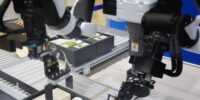5 Core Business Areas That CMMS Reduces Costs

In recent years, computerized maintenance management systems (CMMS) have become more and more popular as more organizations around the world understand the benefits that they can bring. Ultimately, the majority of these benefits center around reducing costs.
The best physical asset management companies offer solutions that can make a significant difference to your bottom line by improving processes, boosting employee productivity, and reducing the likelihood of sudden equipment failure. If you still aren’t convinced that your organization needs to implement it, read on for the five core business areas that CMMS reduces costs.
1. Practice Planned Preventive Maintenance
CMMS enables your business to conduct proactive rather than reactive maintenance. This is undoubtedly the most cost-effective manner of performing maintenance as they are planned activities rather than unexpected tasks that have to be undertaken in an ad-hoc manner, which quickly increases costs. By introducing CMMS to your organization, you are positioning yourself to better monitor your investments and recognize an issue before it becomes an expensive problem.
Unfortunately, almost 60 percent of asset-intensive organizations continue to utilize a reactive maintenance strategy despite the higher costs associated with it. When you implement CMMS, you are making sure that you are not part of this statistic and can perform better than your competition.
2. Manage Maintenance Operations
As a business owner with assets, it is crucial that you have a system in place that oversees and manages all of your maintenance operations. A CMMS is your best option as it provides you with what you need to organize the necessary data and also analyze it. In other words, the best CMMS solutions aid your employees in keeping maintenance operations going while also reducing the time and money needed for those operations to happen.
One of the most useful ways that CMMS helps you to manage your maintenance operations is through recurring services. Not only will you be able to set up recurring maintenance on specific machinery, but you can also set start and end dates for that maintenance. For example, when organizing your proactive maintenance systems, you can produce work orders to be automatically generated at specified intervals.
Through this recurring maintenance system, you will be able to have a better understanding of what assets routinely have issues as well as which divisions of the company are needing parts more frequently. By obtaining and analyzing this data, you are in a more informed position to make strategic decisions related to cost and performance.
3. Decrease Downtime & Chance of Sudden Equipment Failure
A well-maintained asset is going to outlive one that isn’t. By increasing your asset life, CMMS enables you to get more value from your machinery. Let’s say you have machinery that totals $500 thousand, and by implementing a high-quality CMMS, you are able to keep it operating for five years instead of four, then the CMMS has ensured you get $100,000 more value from your assets.
Similarly, this reduces the likelihood of sudden equipment failure, which is a nightmare for any organization. Ensuring that your machines are operating in top condition at all times is the most critical aspect as the last thing you want is to have unexpected downtime from your machines. When this happens, it interrupts business operations, decreases work capability, and raises costs. By utilizing a CMMS solution, you are more equipped to keep track of the health of all your assets so as not to encounter sudden equipment failure.
For organizations that have attempted to deal with this challenge through manual methods, CMMS makes a significant difference as it offers a solution to the many inherent issues that come along with manual systems. After all, the alternative is relying on hand-written records and external systems that can easily be overlooked, forgotten, or mishandled by employees. There is no need to have this extra stress surrounding maintenance management when a CMMS solution can handle it all for you.
4. Upgrade Inventory Control
Without a CMMS solution, it is hard for most organizations to stay on top of their inventory control. In order to do so requires a laborious process that uses up precious human resources and time. If business processes are often postponed due to delayed work orders or missing parts, then it is time you implemented a better system. The best CMMS solutions include inventory control and management tools that support your managers in guaranteeing that essential parts and machinery are ready and operating whenever needed.
Additionally, this type of inventory control and management system can be set-up to automatically send you email alerts when you are low on inventory, generate the necessary purchase orders, compile information about prices and vendors, and recognize min and max thresholds.
This type of system also reduces the chance of purchasing parts that aren’t needed, especially if you have operations in different locations. If this is the case, CMMS solutions will accommodate the movement of parts between sites, provide you with an up-to-date list of where assets are currently located, and reduce the chance of losing items either by misplacement or theft.
5. Boost Productivity
The final way that a CMMS solution can seriously impact your finances is by boosting employee productivity. As the CMMS solution is able to take care of scheduling maintenance-related tasks and reduces the need to deal with cumbersome paperwork, it allows employees to spend their time on other more productive matters.
What is more, thanks to proactive maintenance, workers also won’t experience downtime, thus increasing their productivity. After all, the more productive your workforce, the more you can produce and the more money you can make.
Last but not least, having all work orders computerized ensures you can keep track of key metrics that will demonstrate who was assigned to each work order, how long they worked on it, and how well they performed it. This helps to keep employees accountable and provides you with clear measures of their performances.
Does your organization currently utilize a CMMS solution? If not, what are you looking for in a CMMS vendor? Let us know your thoughts and any relevant experiences in the comments below!
AUTHOR BIO
Andrew Piechowiak is the General Manager – Asset Management Business at SGE Group International, a multidisciplinary group of companies with core business interests in Asset Lifecycle Management, Land Development and Software. Aladdin is SGE’s proprietary Asset Lifecycle Management software, designed to empower FM, Maintenance and Asset teams across multiple industry sectors.








